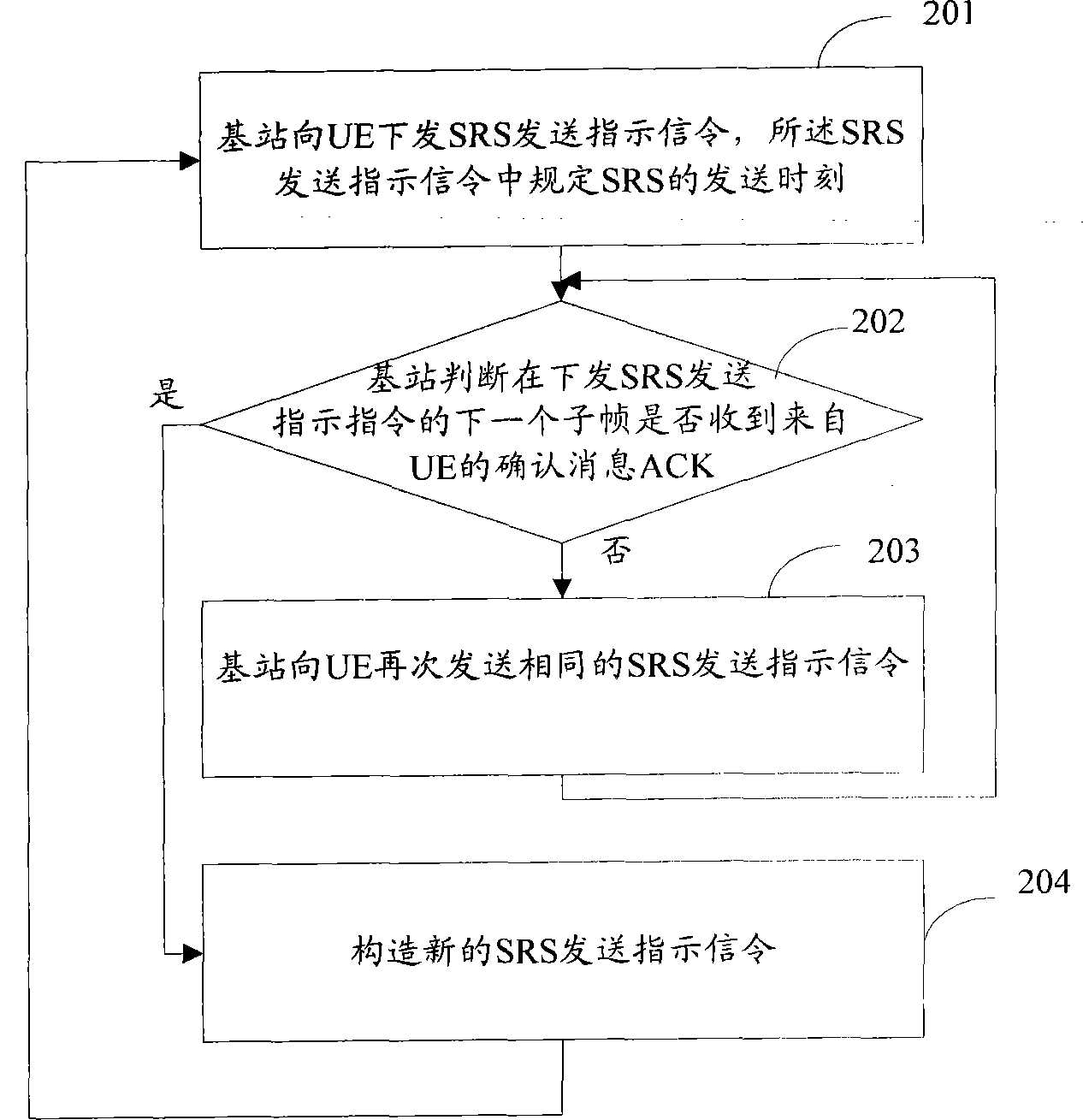Method and system for carrying out non-periodic scheduling through physical downlink control channel (PDCCH)
A physical downlink control and non-periodic technology, which is applied in the direction of using the return channel for error prevention/detection, transmission system, digital transmission system, etc., can solve problems such as business performance degradation, and achieve the effect of improving business capacity decline
- Summary
- Abstract
- Description
- Claims
- Application Information
AI Technical Summary
Problems solved by technology
Method used
Image
Examples
Embodiment 1
[0056] Embodiment 1: The base station eNB realizes the retransmission of the SRS transmission indication signaling through the automatic error detection technology.
[0057] In Embodiment 1, after receiving the SRS transmission indication signaling, the UE transmits the SRS at the SRS transmission time specified in the SRS transmission indication signaling. The processing flow of the base station in Embodiment 1 is as follows figure 1 shown, including the following steps:
[0058] Step 101: the base station sends an SRS sending instruction signaling to the UE, and the SRS sending instruction signaling specifies the sending time of the SRS.
[0059] Step 102: The base station detects whether the SRS is received from the UE at the time of sending the SRS, if yes, execute step 104, otherwise execute step 103.
[0060] Step 103: the base station sends the same SRS transmission indication signaling to the UE again, and returns to step 102.
[0061] Step 104: Construct a new SRS ...
Embodiment 2
[0064] Embodiment 2: The UE realizes the retransmission of the SRS transmission indication signaling by using the automatic retransmission request technology.
[0065] In the second embodiment, after receiving the SRS transmission indication signaling, the UE immediately sends an acknowledgment message ACK to the base station in the next subframe, and then sends the SRS at the SRS transmission time specified in the SRS transmission indication signaling.
[0066] The processing flow of the base station in Embodiment 2 is as follows figure 2 shown, including the following steps:
[0067] Step 201: the base station sends an SRS transmission instruction signaling to the UE. The sending time of the SRS is specified in the SRS sending indication signaling.
[0068] Step 202: The base station judges whether the next subframe for sending the SRS sending instruction is received
[0069] An acknowledgment message ACK from the UE, if yes, go to step 204; otherwise go to step 203.
...
Embodiment 3
[0073] Embodiment 3: The base station eNB realizes the retransmission of the SRS transmission indication signaling through the redundant transmission technology.
[0074] The basic idea of the third embodiment is that when the base station eNB determines that the UE signal is lower than a certain threshold, it sends multiple SRS transmission indication signaling of the UE on the same PDCCH channel; or, in the PDCCH of multiple consecutive downlink subframes Send the SRS transmission indication signaling of the UE.
[0075] The processing flow of embodiment three is as follows image 3 shown, including the following steps:
[0076] Step 301: The base station performs aperiodic SRS scheduling according to the prior art or the manner of Embodiment 1 or Embodiment 2.
[0077] Step 302: The base station receives the SRS signal from the UE, and judges whether the quality of the received SRS signal satisfies the trigger condition for repeatedly sending the SRS transmission instru...
PUM
 Login to View More
Login to View More Abstract
Description
Claims
Application Information
 Login to View More
Login to View More - R&D
- Intellectual Property
- Life Sciences
- Materials
- Tech Scout
- Unparalleled Data Quality
- Higher Quality Content
- 60% Fewer Hallucinations
Browse by: Latest US Patents, China's latest patents, Technical Efficacy Thesaurus, Application Domain, Technology Topic, Popular Technical Reports.
© 2025 PatSnap. All rights reserved.Legal|Privacy policy|Modern Slavery Act Transparency Statement|Sitemap|About US| Contact US: help@patsnap.com



